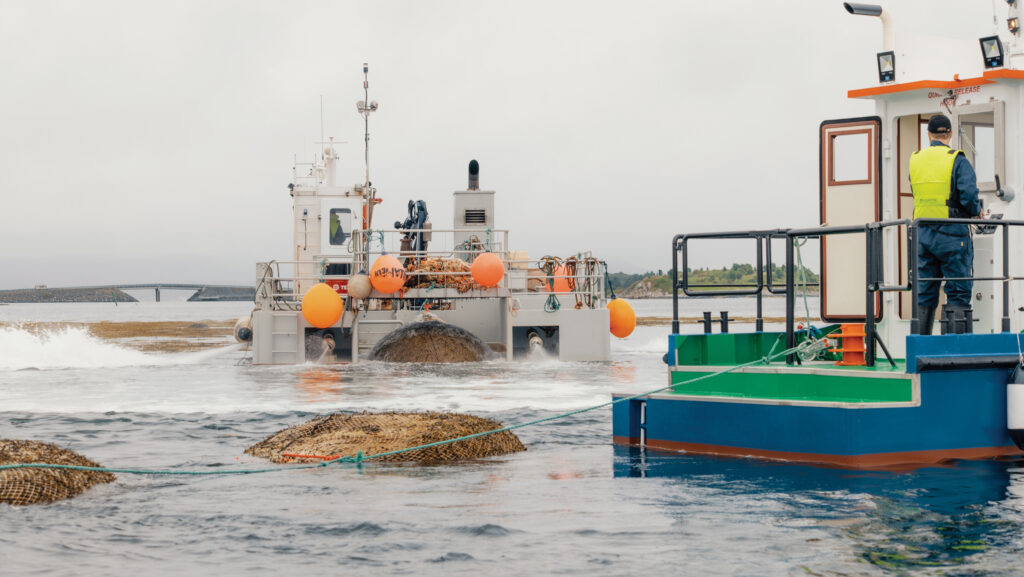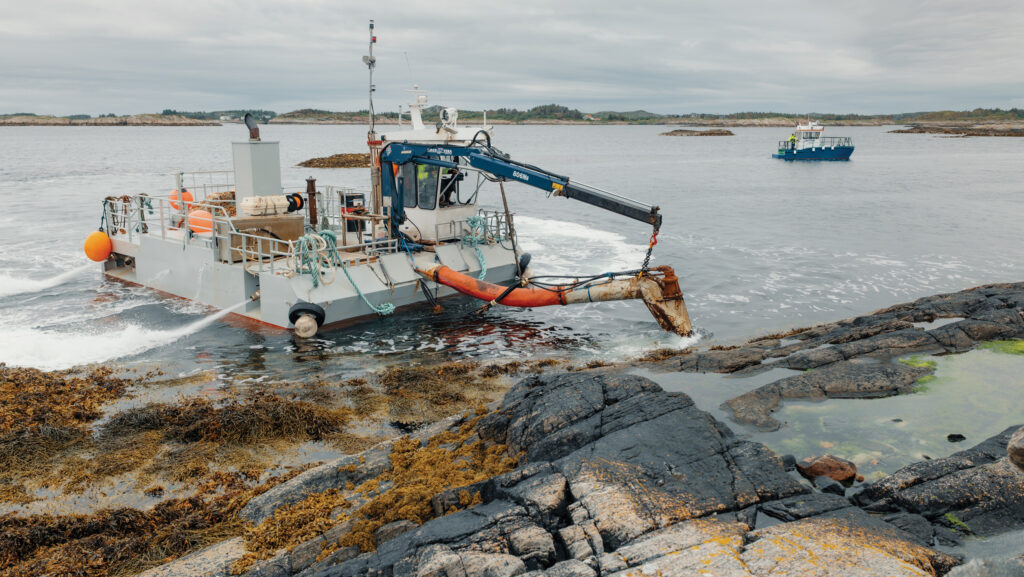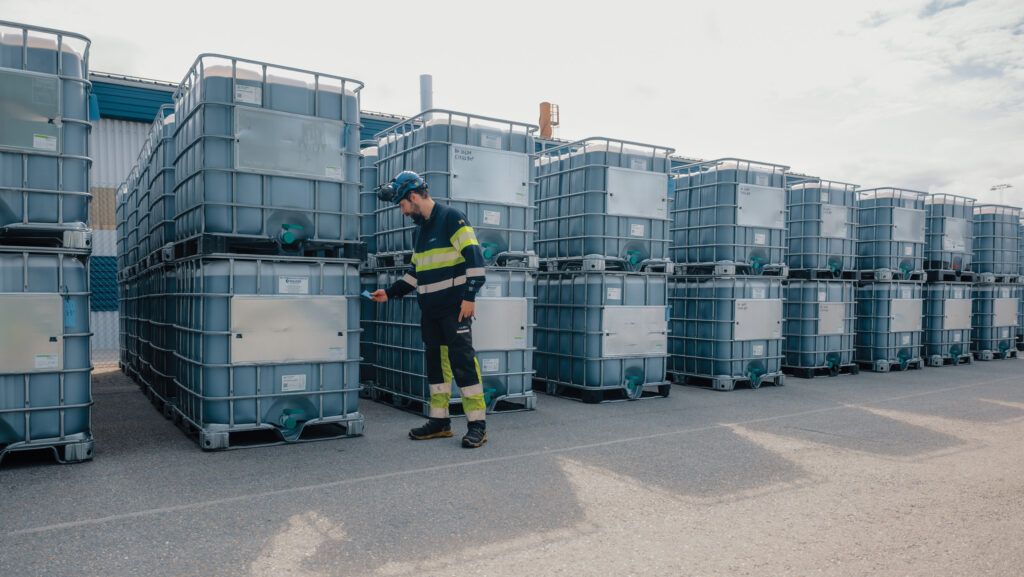Why seaweed is key to biological crop market growth
 © Ilja Hendel/Getty Images for Syngenta
© Ilja Hendel/Getty Images for Syngenta The global market for biological crop protection products is expanding at a rate four-and-a-half times faster than conventional chemistry.
Valued at $8bn (£5.9bn) in 2020, this figure is expected to surpass $20bn (£14.8bn) by 2030.
Seaweed-based biostimulants rich in micronutrients now represent a significant proportion of the biostimulant market and are proving particularly popular due to their growth-promoting compounds.
See also: Signature seed dressing helps grow fungicide-free crops
24/7 seaweed harvesting
The use of seaweed as a fertiliser and livestock feed dates back to the time of the Vikings.
Today, this ancient practice has evolved into a modern, scalable science – with growing relevance for sustainable agriculture.
Norwegian seaweed firm Algea has been harvesting and processing Ascophyllum nodosum seaweed for agricultural purposes for nearly 90 years.
Growing in the intertidal areas of the cold arctic ocean, A nodosum has evolved to survive in extremely harsh environments.
The team at Algea harvest seaweed and extract key nutrient components from the marine plant for use in biological products.
Harvest is an all-year-round operation, taking place 24 hours a day, explains Ottorino Biondi, general manager at the firm, which is owned by Syngenta Biologicals.
“We operate along 20,000km of remote coastline out of our base in the Norwegian town of Kristiansund,” he says.
Icy cold water, fluctuations of the tide, and the long exposure to sunlight and darkness, has influenced its chemical composition and led to the development of highly valuable active elements, within the plant.
Ascophyllum nodosum composition

© Ilja Hendel/Getty Images for Syngenta
Ottorino details the chemical composition of the Ascophyllum nodosum extract:
- Alginates The structural component of seaweed which enhances availability of minerals to plants, improves soil aeration, and increases water-holding capacity.
- Laminarin A polysaccharide that provides energy and activates plant defence systems.
- Phlorotannins Phenolic compounds that support the plant’s response to environmental stresses.
- Iodine An inorganic antioxidant supporting plant defence mechanisms.
- Mannitol Involved in osmotic regulation and stress tolerance in plants, enhancing cellular protection against drought and salinity.
- Fucoidans Stimulates plant defence pathways under stress (for example, drought, salinity, heat), supports moisture retention, and enhances microbial activity for greater resilience.
Sustainable five-year cycles
The team follows a strict harvesting process to preserve quality and marine ecosystems.
“Only the upper part of the seaweed is cut during low tide, allowing for sustainable regrowth. Each site follows a five-year rotation cycle to protect the ecosystem.
“We find increased biomass of the seaweed in the second harvest year as cutting stimulates growth,” explains Ottorino.
Once harvested, seaweed is transported within two days to processing facilities where it is dried using seawater-based cooling systems and converted into a concentrated soluble powder.
The raw materials are then refined and blended with other ingredients, to produce shelf-stable biostimulants. Notably, about 90% of Syngenta’s biological product line contains seaweed extracts.
This process illustrates an efficient, circular economy. Even the by-products are utilised in livestock feed or returned to the sea to minimise waste and environmental impact.
Biological acceleration
Syngenta, the global seed care and plant protection product specialist, is now accelerating the rollout of its nature-inspired biological range.
The company is set to become a global leader in agricultural biological solutions, responding to rising demand for sustainable, high-performance tools that help farmers boost efficiency.
Jonathan Brown, global head biologicals and seed care, says: “With our recent partnerships and acquisitions and extended manufacturing capacities, Syngenta is positioning itself as the leader in biologicals.
“Our scientific expertise is at the forefront of our research and development efforts to provide farmers with the next generation of biologicals, helping them transition towards more sustainable farming practices, such as regenerative agriculture.”

© Ilja Hendel/Getty Images for Syngenta
Innovation and challenges
However, developing and scaling-up biological products is complex, notes Andreea Poppa, head of strategy for biologicals at the firm.
“Unlike synthetic molecules, biologicals are living microorganisms or delicate natural extracts which can complicate production,” she says.
“Biologicals are less stable than conventional chemistry, requiring reliable extraction and formulation processes. We need to scale manufacturing cost-effectively while maintaining their quality,” she continues.
Providing farmers with a clear understanding of how biological products work is crucial and this knowledge transfer is key for optimum use.
What’s more, Andreea notes that biologicals pose a “reverse engineering challenge”.
“In traditional chemistry, you start from a hypothesis and test to see if it works. Whereas, with biologicals this is often the reverse.
“In this instance, we know something has a particular impact but we need to find out how and why this works.”
One of the major limitations of scaling biological production worldwide is the inconsistency in global regulatory frameworks, which creates additional complexity for industry.
Syngenta continues to expand its biological roll-out. In December 2024, the company acquired a California-based start-up which specialises in the development of nutrient-use efficiency products.
More recently, Syngenta concluded the integration of Novartis’s Strains and Natural Products Collection, the repository of natural compounds and genetic strains for agricultural use.
It also opened a biologicals facility in South Carolina, which is set to produce 16,000t of biostimulants annually.
The company hopes these additions will accelerate biological development, bringing new tools to the market to complement conventional crop protection solutions.
Watch the video below of the seaweed harvest in Norway, courtesy of Syngenta.
5 key benefits of seaweed biostimulants

© Ilja Hendel/Getty Images for Syngenta
1 Enhanced growth and yield
Seaweed extracts encourage faster germination, stronger shoots, and accelerated plant development. This can lead to higher biomass, with bigger and bolder yields.
2 Improved root systems
By promoting root elongation and the formation of root hairs, seaweed biostimulants boost water and nutrient uptake.
Plants with better root systems are more drought-resistant and efficient in nutrient use.
3 Greater nutrient efficiency
Seaweed compounds help optimise how plants absorb and utilise available nutrients.
This reduces dependency on synthetic inputs and supports higher yields with lower fertiliser applications.
4 Stress tolerance
Seaweed has evolved in harsh conditions.
These survival traits are transferred to crops, helping them withstand abiotic stresses such as drought, salinity, and extreme temperatures, and even increasing resistance to certain diseases.
5 Soil health improvement
Seaweed biostimulants stimulate beneficial microbial activity in the soil, enhance nutrient cycling, and improve soil structure.
This leads to long-term gains in fertility and resilience, providing the foundation of regenerative agriculture.
Types of biologicals

© Ilja Hendel/Getty Images for Syngenta
Generally, biologicals fall into three distinct categories.
- Biocontrols: Help manage pests and crop threats through products based on naturally-occurring materials
- Biostimulants: Enhances plant performance and stress tolerance, enabling crops to withstand stresses such as temperature fluctuations and water scarcity
- Nutrient use efficiency (NUE): Optimises and enhances plants absorption and use of essential elements like phosphorus, nitrogen and potassium.

